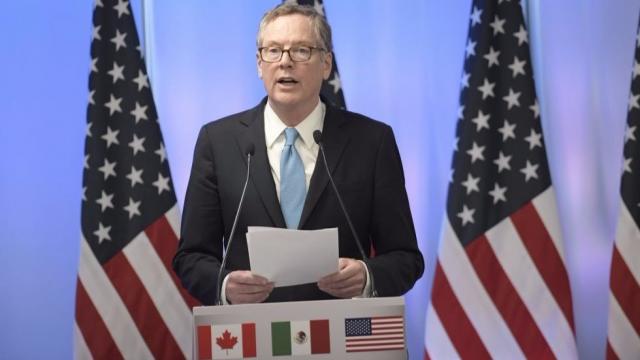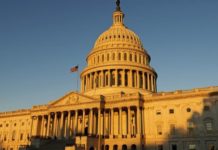
Published in The Hill
Each round of the North American Free Trade Agreement (NAFTA) negotiations between the U.S., Canada and Mexico turns into a nail-biting episode of a good TV show, mainly because it is very hard to understand what the U.S. is trying to achieve.
The only consistently stated objective is to create or “bring home” jobs for Americans, but the present administration has offered scant details on how they plan to accomplish that.
On its face, the July 2017 report, “Summary of Objectives for the NAFTA Renegotiation” that was released by U.S. Trade Representative Robert Lighthizer had generally positive objectives, such as trying to improve and modernize NAFTA by ensuring good regulatory practices and establishing rules that reduce or eliminate barriers to U.S. investment in all sectors in NAFTA countries.
But then we learn of U.S. insistence on including a “sunset” provision that will require the parties to approve the agreement every five years and the weakening of the dispute settlement process. It is hard to see how these policies fit with objectives that were declared this summer, much less with the administration’s goal of creating jobs.
Let’s start with the sunset provision. It is no secret that after the NAFTA agreement took effect, production chains in many sectors were relocated based on resource and cost differences. The automobile industry and its supply chains are a great example of this.
There was some consolidation of process in order to take advantage of “economies of scale.” However, as noted by Paul Krugman, Maurice Obstfeld and Marc Melitz in their book, “International Trade: Theory and Policy (11th edition),” somehow, “The relocation of specific final assembly plants from the U.S. to Mexico has received a disproportionate amount of news coverage regarding the economic impact of NAFTA for the U.S.”
The authors continue: “These reports rarely mention the large growth of U.S. autos and parts export to Mexico.” In other words, the media has only covered the jobs that were relocated outside the U.S. in this industry and not the many more comparable ones that were created in the same American industry (and others) due to the trade deal.
Obviously, all these relocations and consolidations require a stable economic environment and trust in an agreement that guarantees the rules will not change (at least for the worst) in the middle of the game. When someone plans a large project that requires a significant capital investment, their planning horizon is not five years.
Take, for example, a Japanese company considering locating a final assembly plant in North America in order to take advantage of the free trade agreement. If this investment is made in Mexico, the U.S. and Canada will still benefit because they will supply parts which require even more investment.
By requiring reapproval of a trade agreement each five years, the administration would introduce more risk to the investment decision and could cause the plant to relocate somewhere else. That will have negative impacts on the U.S. economy in terms of lost investment, jobs and income.
Another important feature an investor would like to see is how his or her investment would be protected. There needs to be a binding and credible mechanism with which any dispute can be handled. NAFTA was the first big trade agreement between two wealthy countries and one developing country, and it was also the first free trade agreement that contained an investor-state dispute settlement provision.
Mexico has come a long way, both politically and economically, since the inception of the agreement. But there could be significant changes in Mexico after its upcoming elections. NAFTA’s strong rules guarantee the rights of investors, and therefore, it protects jobs across all three countries.
Changes to NAFTA could set the precedent for the future trade negotiations and weaken the overall dispute system, which would have a negative impact on investment flows between member countries.
If the administration’s goal with these two provisions is to make sure that investment and jobs stay at home, they are misguided. As mentioned before, investment decisions are based on a variety of factors. Removing the certainty introduced by these rules does not guarantee that U.S. dollars will be invested at home.
In addition, according to a recent paper by the Peterson Institute, “On average, for every 100 jobs U.S. manufacturers created in Mexican manufacturing, they added nearly 250 jobs at their larger U.S. home operations.”
A closer look at these two items pushed by the U.S. creates questions about how they would help U.S. producers, workers and ultimately consumers, who are generally forgotten in trade discussions.
A 2014 study by Fajgelbaum and Khandelwal notes that a large share of benefits resulting from lower prices due to free trade accrue to lower income consumers, since they spend a larger share of their disposable income on heavily traded products.
A failure to retain NAFTA provisions due to a withdrawal will have the effect of raising U.S. consumer prices.
Obviously, many of the trade positions advocated by the administration are based on campaign rhetoric. But it is time for the administration to sit down and evaluate its overall economic agenda and make a cohesive plan.
The administration is pushing for tax reform in order to grow the U.S. economy, create jobs and increase wages. Advocating a destructive trade agenda could negate what could be achieved through tax reform by decreasing the anticipated economic growth and eating away the impact of the wage increase by increasing costs for consumers.
As the president has said over and over again, we need to pick smart policies to “make America great again.”
Pınar Çebi Wilber is a senior economist at the American Council for Capital Formation, a free-market, pro-business organization advocating tax, energy and regulatory policies that facilitate saving and investment, economic growth and job creation. Follow her on Twitter @DrCebiWilber.






